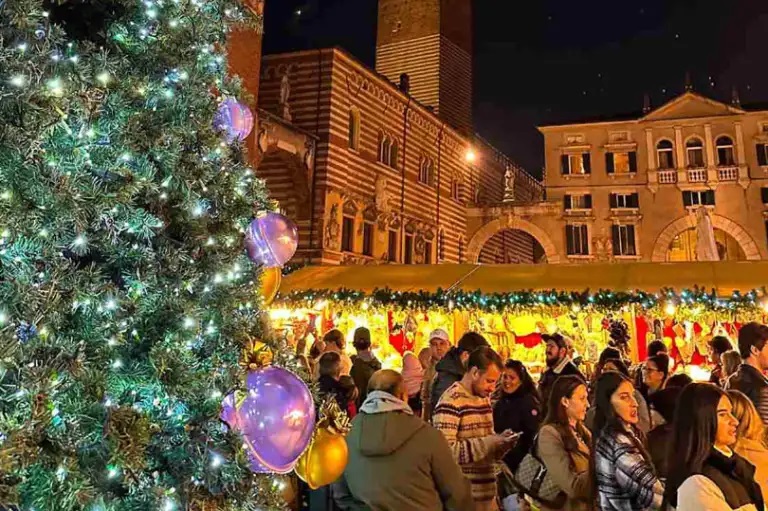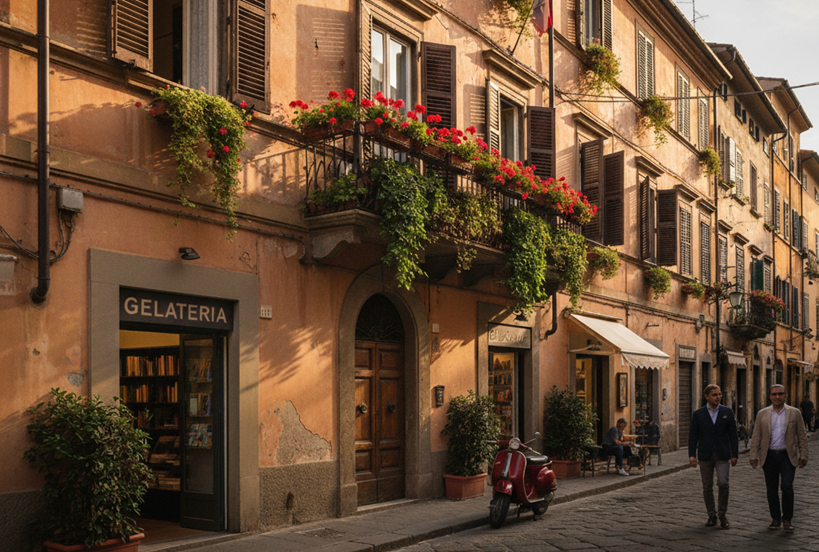Exploring Puglia: From Beaches to Baroque Towns
by Adriana ruiz
Puglia, located in southern Italy, offers a wealth of stunning coastal towns, picturesque landscapes, and delicious culinary delights. Here are some must-visit areas and towns in Puglia for beach lovers, explorers, and food enthusiasts:
1. Polignano a Mare Known for its dramatic cliffs overlooking the Adriatic Sea, Polignano a Mare boasts stunning beaches and crystal-clear waters. Here’s what makes Polignano a Mare a must-visit destination:
View this post on Instagram
Old Town and Limestone Cliffs:
– The oldest part of the town lies on limestone cliffs, offering breathtaking views of the sea. The white houses cling to the rocky promontory, creating a picturesque scene.
– Natural caves are scattered around Polignano’s territory, where remains of prehistoric human settlements have been discovered.
Exploring the Old Town:
– Wandering through the narrow streets and white stone-paved alleys is the best way to discover this little gem.
– You’ll often stumble upon small terraces at the edge of cliffs, providing spectacular viewpoints.
– The architecture of the historic center is typical of Mediterranean villages, with outside stairways and colorful flower-adorned arches.
Monuments and Historic Buildings:
– The Marchesale Arch, located between the Lama Monachile bridge and Garibaldi square, was the original ancient gateway to the town.
– Piazza Vittorio Emanuelle II (also known as the square of the clock) features an ancient clock on the façade of one of the historic buildings.
– Streets throughout the historic center are adorned with religious images, colorful flowers, and even lines of painted poems.
Lama Monachile (Cala Ponte):
– This beach, also known as Cala Ponte, is literally perched on the cliffs.
– Explore the white houses, narrow streets, and small squares that lead to panoramic balconies with stunning Adriatic views.
Blue Flag Beaches:
– Polignano a Mare has often received the Blue Flag (from the Foundation for Environmental Education) for its clean bathing water and beaches.
2. Alberobello Famous for its unique trulli houses, Alberobello is a UNESCO World Heritage site and a must-visit destination in Puglia. Here are some fascinating facts about this town:
View this post on Instagram
Trulli Buildings:
– Alberobello is famous for its trulli, which are traditional dry-stone huts with conical roofs. These iconic buildings give the town its distinctive appearance.
– Trulli are constructed without mortar, using only carefully stacked limestone stones. They were originally built as simple dwellings for peasants and farmers.
UNESCO World Heritage Site:
– The trulli of Alberobello have been designated as a UNESCO World Heritage Site since 1996. This recognition highlights their cultural and architectural significance.
– Alberobello is the only inhabited center with an entire district of trulli, making it a truly unique destination.
History and Urbanization:
– The first occupation of the area began in the early 16th century under the initiative of Count Andrea Matteo III Acquaviva d’Aragona.
– The abundance of limestone and the count’s permission to build houses without mortar led to the creation of the peculiar trulli.
– Alberobello’s center was built along the ancient river Cana, where the present-day Largo Giuseppe Martelotta stands.
Feudal History:
– Alberobello remained a fief of the Acquaviva of Aragon until 1797 when King Ferdinand IV of Bourbon elevated it to a royal city, freeing it from feudal servitude.
– The first mayor, Francesco Giuseppe Lippolis, was elected on June 22, 1797.
Cultural Capital of Trulli:
– Alberobello is considered the cultural capital of the trulli in the Itria Valley.
– Walking through its narrow streets, you’ll encounter rows of these enchanting cone-shaped houses.
3. Monopoli is a coastal town renowned for its beautiful beaches, historic architecture, and vibrant harbor area. Here are some fascinating facts about this unique town:
View this post on Instagram
Historical Roots:
– The area was first settled around 500 BC as a fortified Messapian city.
– In the years 108-110 AD, Emperor Trajan ordered the construction of the Via Traiana, a major Roman road that connected Monopoli to the East. This road played a crucial role in improving communication and trade.
Via Traiana:
– Monopoli boasts the longest stretch of the Via Traiana in Apulia. This ancient road connected Benevento to Brindisi, providing a shorter route compared to the famous Appian Way.
– The Via Traiana began in Benevento, crossed the flat tableland up to Canosa, and continued on to Ruvo. It then split into two directions: an inland road and a coastal road.
– The coastal road led to Bari, Polignano, and Monopoli, making it a vital link for trade and travel.
Charming Old Town:
– Explore Monopoli’s old town, where you’ll find narrow streets, white-washed houses, and historic architecture.
– Visit the cathedral and admire its Baroque beauty.
– Stroll along the beach at Cala Porta Vecchia, enjoying the views of the Adriatic Sea.
Boat Trips and Caves:
– Take a boat trip along the coast to see the famous Polignano caves and the castle of Monopoli.
– The crystal-clear waters and rugged coastline make this experience unforgettable.
Agriculture, Industry, and Tourism:
– Monopoli serves as an agricultural, industrial, and tourist center.
– Its authentic charm, hospitality, and coastal beauty attract visitors from around the world.
4. Otranto: Situated on the eastern coast of Puglia, Otranto is known for its picturesque old town, Byzantine architecture, and pristine beaches.
View this post on Instagram
Location and Geography:
– Otranto is situated on the east coast of the Salento peninsula, overlooking the Adriatic Sea. The city gives its name to the Strait of Otranto, which connects the Adriatic Sea with the Ionian Sea and separates Italy from Albania.
– The lighthouse Faro della Palascìa, located about 5 kilometers (3 miles) southeast of Otranto, marks the most easterly point of the Italian mainland.
– Approximately 50 kilometers (31 miles) south of Otranto lies the promontory of Santa Maria di Leuca, the southeastern extremity of Italy.
History:
– Otranto has ancient origins, dating back to the Greek city of Magna Graecia Hydrus (in Greek: Ὑδροῦς) or Hydruntum (in Latin).
– During Roman times, it was an important city due to its proximity to the eastern coast of the Adriatic Sea. It served as a point of embarkation for the East, with a shorter distance to Apollonia (present-day Albania) than from Brundisium (present Brindisi).
– Otranto played a role in various historical events, including wars involving Pyrrhus and Hannibal.
Natural Beauty:
– The area between Otranto and Santa Maria di Leuca is part of the Regional Natural Coastal Park of “Costa Otranto – Santa Maria di Leuca e Bosco di Tricase”, established by the Apulia Region in 2008.
– Notable attractions include Ciolo, a rocky cove, and the picturesque coastline.
Fun Fact:
– Otranto holds the distinction of being the most eastern municipality in Italy. Its headland, also known as Punta Palascìa, lies to the south of the town and represents the easternmost point of the Italian peninsula.
5. Gallipoli: With its picturesque old town located on a small island connected to the mainland by a 16th-century bridge, Gallipoli is a gem of the Ionian coast.
View this post on Instagram
– Picturesque Setting: The town’s narrow streets wind through centuries-old buildings, their facades adorned with colorful shutters and flower-filled balconies. Cobblestone paths lead you to hidden squares, where locals gather to chat and sip espresso.
– Historic Charm: Gallipoli wears its history proudly. Ancient walls encircle the old town, protecting it from the lapping waves of the Ionian Sea. Explore the Castello Angioino, a fortress that has witnessed centuries of maritime trade, invasions, and cultural exchange.
– Sandy Beaches: Beyond the historic heart lies a coastline of golden beaches. Sink your toes into warm sand, listen to the gentle waves, and soak up the Mediterranean sun. Baia Verde and Punta della Suina are popular spots for beach lovers.
– Local Cuisine: Gallipoli’s culinary scene is a feast for the senses. Savor frutti di mare (fresh seafood) at waterfront trattorias. Try orecchiette pasta with local olive oil and a sprinkle of pizzica (a traditional dance) in the air.
6. Lecce known as the “Florence of the South” due to its rich Baroque architecture, Lecce is a cultural hub in Puglia. Here are some fascinating facts about this ancient city:
View this post on Instagram
– Baroque Architecture: Lecce is renowned for its rich Baroque architecture. As you wander through its streets, you’ll encounter ornate facades, intricate carvings, and elegant palaces. The city’s buildings seem to tell stories of centuries gone by.
– Lecce Stone: The city’s unique limestone, known as “Lecce stone,” is a prized export. This soft and workable material has been used for centuries in sculptures, monuments, and buildings. It gives Lecce its distinctive appearance.
– Salentine Peninsula: Lecce sits on the Salentine Peninsula, which juts out into the Mediterranean Sea. Its location at the heel of Italy’s boot makes it a strategic point historically.
– Roman Heritage: Lecce has a rich Roman heritage. It was originally called Lupiae and had a theater and an amphitheater. The Roman influence is still visible in the city’s archaeological sites.
– Patron Saint: Orontius of Lecce, locally known as Sant’Oronzo, is considered the city’s first Christian bishop and is Lecce’s patron saint. His legacy is celebrated in various landmarks.
– University of Salento: Lecce is home to the University of Salento, contributing to its vibrant student life and academic atmosphere.
– Olive Oil and Wine: Besides its architectural wonders, Lecce is an important agricultural center. It produces olive oil and wine, adding to the region’s culinary delights.
– Industrial Center: Lecce also plays a role as an industrial center, particularly specializing in ceramics.
7. Salento Peninsula: This southernmost part of Puglia is blessed with stunning beaches, crystal-clear waters, and picturesque coastal towns.
View this post on Instagram
Geography and History:
– Salento, also known as Terra d’Otranto, is a cultural, historical, and geographic region located at the southern end of the administrative region of Apulia (Puglia).
– It forms a sub-peninsula of the Italian Peninsula, often described as the “heel” of the Italian “boot.”
– Salento encompasses the entire administrative area of the province of Lecce, a significant part of the province of Brindisi, and a portion of the province of Taranto.
– In ancient times, it was called Messapia, inhabited primarily by the Messapii people.
– The name “Salento” is derived from the Latin word “salum”, meaning “surrounded by sea”.
– The region has a rich history, with influences from Greek, Roman, and Byzantine civilizations.
Geographic Features:
– The Salento peninsula is composed of limestone, dividing the Gulf of Taranto (west) from the Strait of Otranto (east).
– It is bordered by the Adriatic Sea to the north and the Ionian Sea to the south.
– The generally flat topography and surrounding seas make Salento prone to windy weather year-round.
– The climate is typically Mediterranean, with hot, dry summers and mild, rainy winters.
Cultural Highlights:
– Baroque Towns: Salento boasts stunning Baroque architecture in its towns, including Lecce, Gallipoli, and Otranto.
– Unspoiled Beaches: Explore pristine beaches along both the Ionian and Adriatic coasts.
– Nature Reserves: Discover protected areas like the Salina dei Monaci and Le Cesine, home to diverse flora and fauna.
– Spa Complexes: Relax in natural thermal springs and spa resorts.
Local Cuisine:
– Salento’s gastronomy features olive oil, citrus fruits, and palm trees.
– Don’t miss trying pasticciotto, a delicious pastry, and frisella, a type of hard bread.
– Pair your meals with local wines, such as Negroamaro and Primitivo.
8. Cisternino: Nestled in the Valle d’Itria, Cisternino is a charming hilltop town known for its whitewashed buildings, narrow alleyways, and panoramic views of the surrounding countryside.
View this post on Instagram
Location and Charm:
– Cisternino is perched on a hill overlooking the Itria Valley. Its historic center is a maze of narrow alleys, whitewashed houses, and flower-filled balconies.
– The town is one of I Borghi più belli d’Italia (“The most beautiful villages of Italy”), and it lives up to its title.
Trulli and Dry Stone Houses:
– Cisternino sits in a historic zone of the Itria Valley, known for its prehistoric conical, dry stone houses called trulli. These unique stone dwellings are preserved under UNESCO safeguards due to their cultural significance.
– The town also features dry stone walls (muretti a secco) and fertile soil, making it the home of the Salento wine region.
Architecture and Landscapes:
– The architecture is typical of the region, with an old Centro Storico (Historical Centre) containing white-washed, stone buildings with cool, shaded, cave-like interiors.
– Cisternino boasts several community squares, each built on the edge of the hill, offering spectacular landscapes.
Cuisine:
– Cisternino’s gastronomy includes delightful dishes such as:
▪ Broad beans purée with wild chicory (fave e cicorie selvatiche).
▪ Orecchiette con braciole e polpette, a particular shape of pasta with tomato sauce, stuffed beef rolls, and bread balls.
▪ “Bombette”, a type of roasted pork rolls.
Transport:
– Public transport in Cisternino is minimal, with most inhabitants relying on their own means of transport.
– Buses connect Cisternino to nearby Fasano, which houses the nearest major train station.
– The nearest airports are in Bari and Brindisi, both less than an hour’s drive away.
9. Martina Franca: Another jewel of the Valle d’Itria, Martina Franca is renowned for its elegant Baroque architecture, lively piazzas, and atmospheric old town.
View this post on Instagram
Location and History:
– Martina Franca, also known as Martène in the local dialect, is situated in the province of Taranto.
– It lies in the southern foothills of the Murge region, near the borders of the provinces of Taranto, Brindisi, and the metropolitan city of Bari.
– The town has a rich history and is renowned for its baroque architecture.
Festival della Valle d’Itria:
– Since 1975, Martina Franca has been hosting the annual Festival della Valle d’Itria, a prestigious summer opera festival.
– The festival presents a diverse repertoire of rather unusual operas, attracting music enthusiasts from around the world.
Geography and Surroundings:
– Martina Franca is located in the Itria Valley, close to the provinces of Bari and Brindisi.
– It shares borders with several municipalities, including Alberobello, Ceglie Messapica, Cisternino, Crispiano, Massafra, Mottola, Locorotondo, Ostuni, Villa Castelli, Grottaglie, and Noci.
– The surrounding landscape features rolling hills, olive groves, and vineyards.
Cultural Highlights:
– Explore the narrow alleys of the historic center, characterized by whitewashed stone buildings with cool, cave-like interiors.
– Don’t miss the chance to visit the Ducal Palace and other architectural gems.
– Martina Franca’s cuisine features local specialties like pasticciotto (a delightful pastry) and frisella (a type of hard bread).
10. Trani: This coastal town is famous for its beautiful harbor, medieval castle, and stunning Romanesque cathedral overlooking the sea.
View this post on Instagram
Historic Center and Romanesque Cathedral:
– Trani’s historic center is a delightful maze of narrow streets, whitewashed buildings, and picturesque squares. One of its standout features is the Cathedral of San Nicola Pellegrino.
– The cathedral, also known as the Cattedrale di Trani, was built in the 12th century and is considered one of the most important examples of Romanesque architecture in Apulia.
– Its magnificent facade boasts a rose window, and the church itself is perched on the water’s edge, offering spectacular views of the sea.
– Inside, visitors can admire the impressive nave, adorned with columns, and a stunning wooden ceiling. The cathedral’s crypt, located beneath the altar, houses the remains of Saint Nicholas the Pilgrim, a 13th-century hermit known for his piety and compassion.
Swabian Castle:
– Trani’s Castello Svevo, or Swabian Castle, is a medieval fortress constructed in the 13th century by the Holy Roman Emperor Frederick II.
– The castle stands proudly on the waterfront, originally designed to protect the city from potential attacks.
Harbor and Sea Views:
– Trani’s harbor is a popular attraction, with colorful fishing boats bobbing in the water. The views of the sparkling Adriatic Sea are simply enchanting.
These are just a few highlights of the many wonderful towns and areas to explore in Puglia. Whether you’re seeking beautiful beaches, historic charm, or delicious cuisine, Puglia has something to offer every traveler.
Subscribe to our newsletter to access content and updates to help navigate life as an expat in Italy. If you need help with your citizenship process, language courses, or general expat life in Italy, email us at [email protected]

Single Female Travelers in Italy: Practical, confident, and connected
Rome rewards curiosity and courage. This guide offers grounded tips, cultural insight, and community support so you can explore with confidence—day and night, solo and on your own terms. Start with confidence “Solo doesn’t mean alone.” In Rome, you’ll find friendly locals, layered history, and a vibrant expat network. A little preparation goes a long […]

Christmas in Italy 2025: A Magical Season for Expats Across Italy
Christmas in Italy isn’t just a holiday — it’s a season full of history, flavor, celebration, and heartfelt traditions that bring families, towns, and entire regions to life. Whether you’re an expat experiencing your first Italian Christmas or a returning fan of the magic, 2025 promises some beautiful celebrations across the country. Here’s what to […]

Tax Residency Incentives in Italy — Your Guide (2025)
Italy offers several tax incentives designed to attract retirees, entrepreneurs, high-net-worth individuals and remote workers. These regimes can be extremely generous — but they are complex and often conditional. This guide explains the main options in 2025, who qualifies, and how we can help you plan a compliant move. Why Italy Offers Tax Incentives Italy […]

Navigating Healthcare in Rome: A Guide for Expats with English-Speaking Doctors
Moving abroad is exciting, that is until real life hits. I came to Italy from Alaska in 2021 for what was supposed to be a four-month study program in Florence. Four years later, I’m still here, now living and working in Rome. When we plan our dolce vita, we think about pasta, museums filled […]

Major Tax Incentives for Home Renovation in Italy (2024-2033)
Taxpayers carrying out renovation work on residential buildings and common areas of residential complexes in Italy are entitled to claim significant tax relief. This benefit allows individuals to deduct a portion of the expenses incurred from their Italian personal income tax (Irpef). This article outlines the rules, beneficiaries, and changing deduction rates for these home […]

How to Save on Taxes When Buying Your First Home in Italy
Buying a first home in Italy comes with significant tax benefits and incentives designed to make property ownership more accessible. Whether you are an Italian national or a foreigner, understanding these advantages can translate into substantial savings on your property purchase. The “Prima Casa” regime is essentially a set of tax reliefs applicable to the […]

Bringing Your Family to Italy: A Guide for Non-EU Citizens
For non-EU citizens residing in Italy, having your family with you is a tangible goal. Italian law provides a framework for family reunification, allowing you to bring close relatives to live with you under specific conditions. This guide outlines the key requirements, procedures, and rights to help you navigate the process. Who Can Apply for […]

How to Become a Self-Employed Worker in Italy
Are you a non-EU citizen wishing to work as a self-employed worker in Italy? This guide explains the conditions you must meet, the procedures to follow, and the rights you can enjoy during your stay. Conditions for Self-Employment To legally engage in independent work in Italy, non-EU citizens must satisfy several conditions and obtain the […]








